Customer support for Linksys is costly. Helping the everyday consumer with routers is tediously technical, with the average call time for setup being 42 minutes.
Billed at .18 cents per minute, that’s $7.56 per call, times the average number of calls per month of 20,000, putting the average cost of support calls per year in North America at
$1.7 million.
Reducing support calls was a top initiative for the business.
Improving Linksys Support to save $172,000 a year
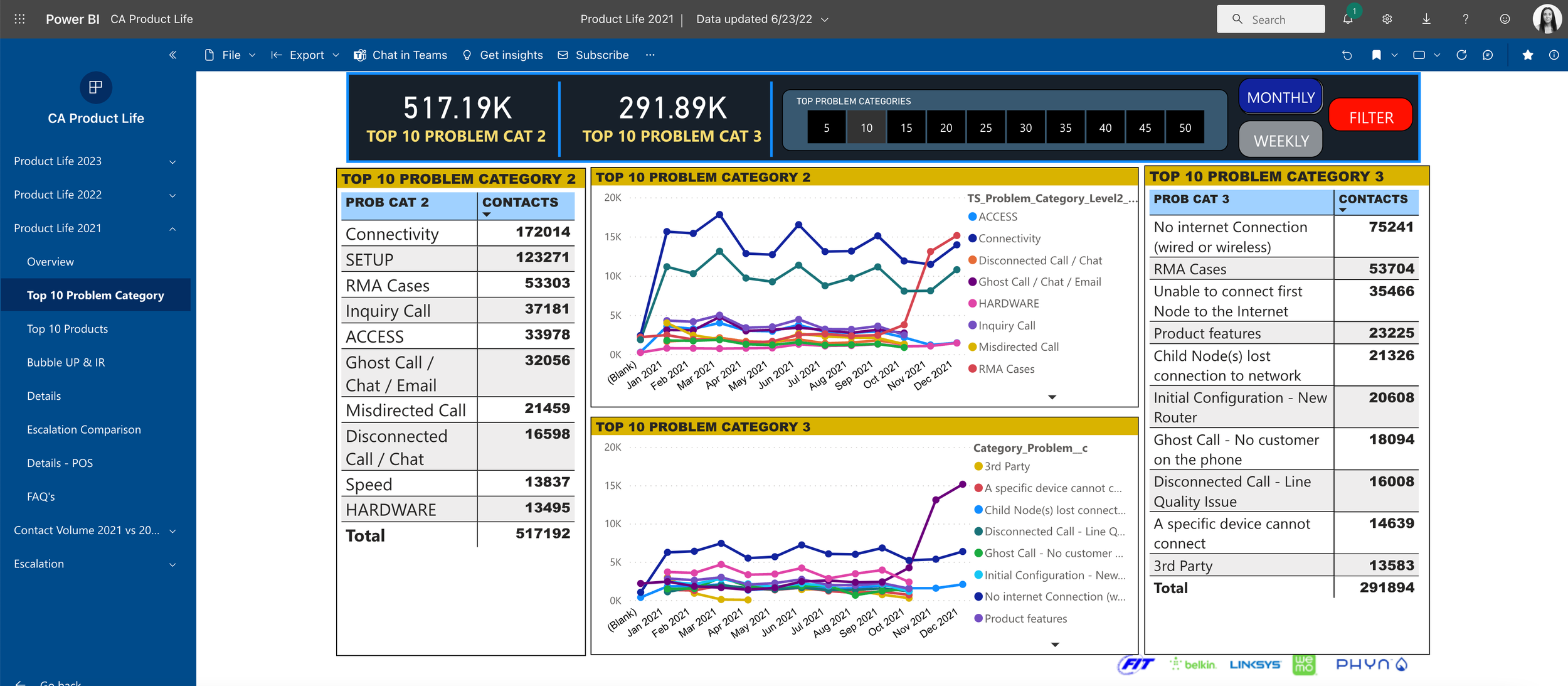
[Power BI]
Start with the data
Fortunately, the customer support team has a dashboard for monitoring support call drivers. Each call is labeled with a code and tallied.
The top 2 topics were first-time setup and node connectivity.*
*In a mesh network, you have multiple routers or “nodes” talking to each other, broadcasting wifi throughout your home. When nodes can’t communicate clearly with each other, it can create poor performance.
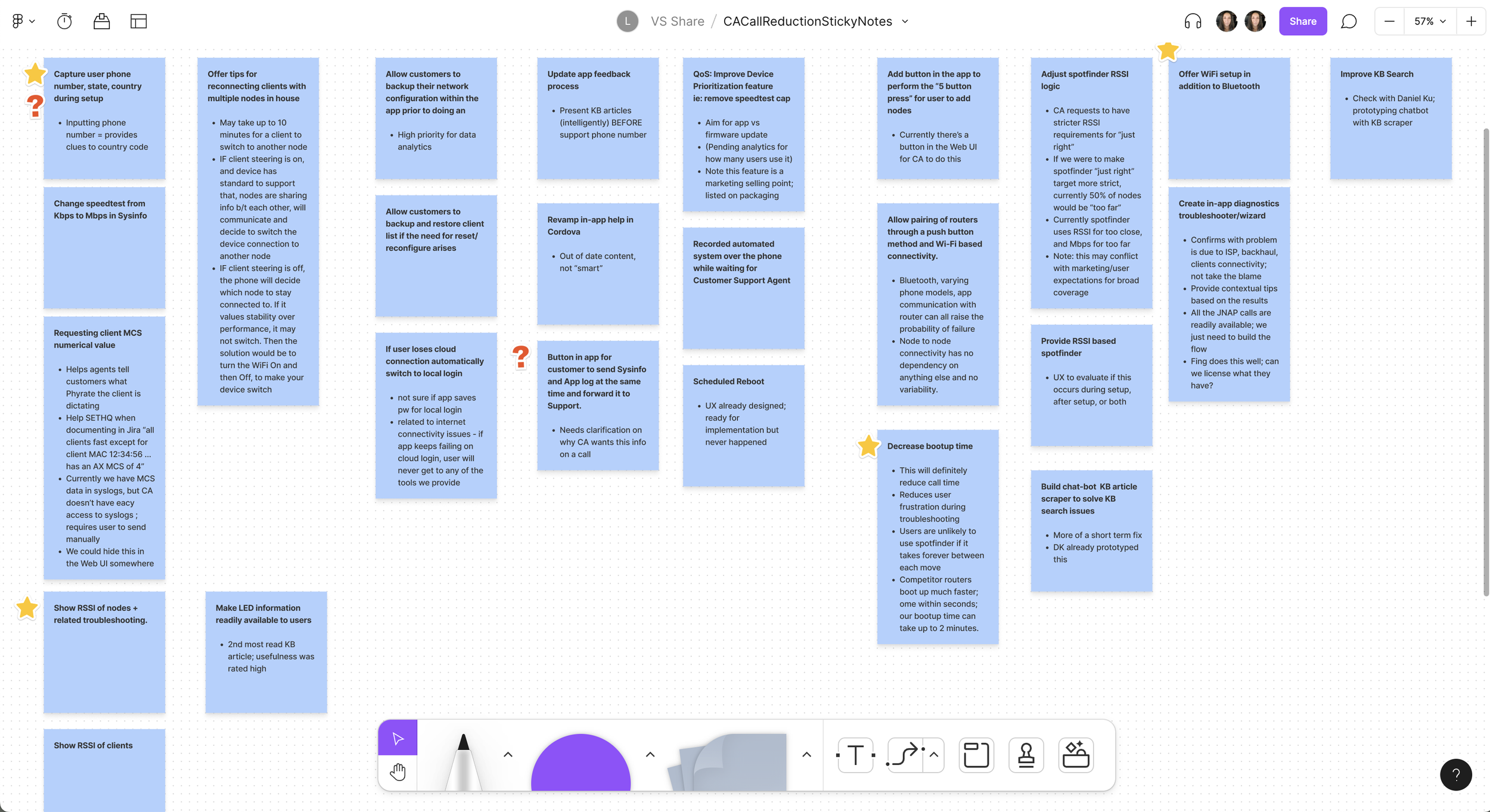
All hands on deck
This project was too big for silos—UX facilitated a forum with colleagues from customer support, product leadership, app and firmware development, data analytics, and research to start talking about the issue.
Above: We asked all members to share ideas that would reduce support calls. These ideas were triaged with potential impact and level of effort.
In a month’s time, UX was to propose a set of actions items for the next app release.
UX action items
Based on our triage we selected a few items for our next app release. For the UX team, my projects were to:
1. Overhaul the app help
2. Build a troubleshooting wizard in the app
3. Reveal router RSSI data
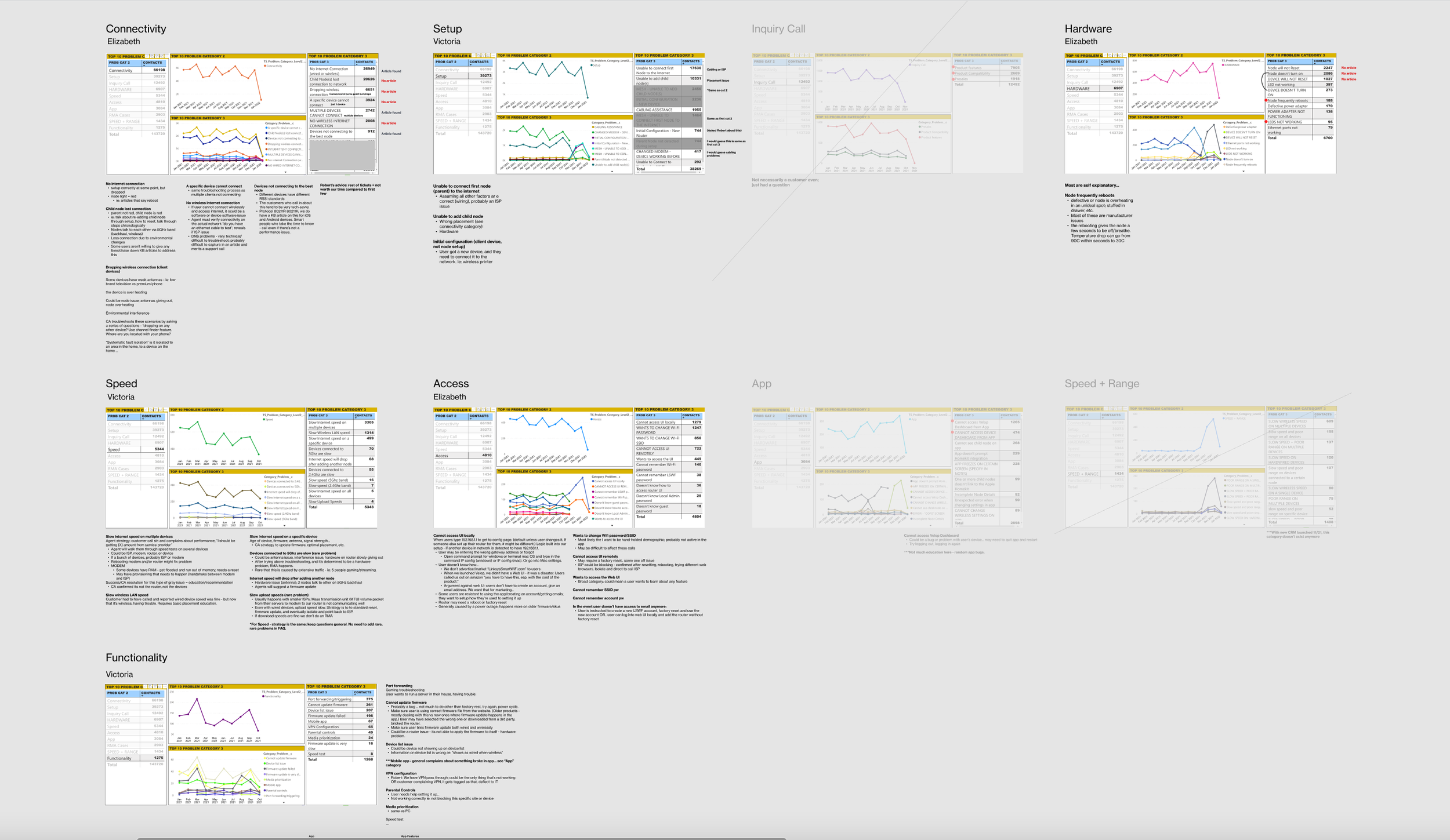
1. App help
After a deep dive into top call driver topics, I assessed how well the current app help content was answering top call drivers in power BI.
I overhauled the content, correlating hierarchy to power BI rankings.
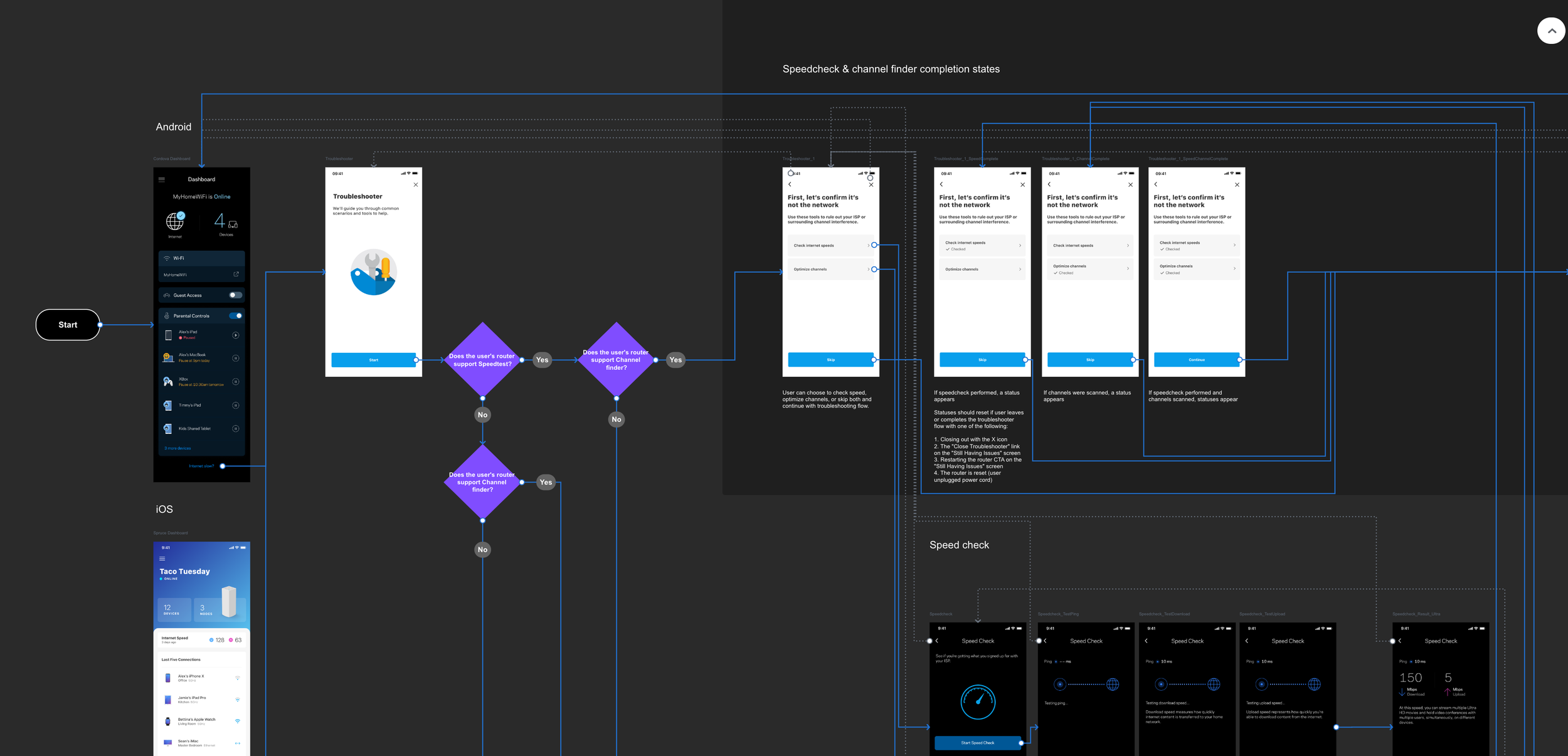
2. Build a troubleshooting wizard in the app
There are several things users can do in the app to be proactive for connectivity, but were unaware due to lack of education and visibility:
Performing a speedtest to see if the internet service provider is to blame,
Restarting your router
Using the channel finder tool to switch to a less crowded channel (changes depending on your neighbors)
In order to cut down on development costs, I modified the original idea of building a logic-based interactive wizard into a simpler one-size-fits-all flow. This meant taking the 5 most high-impact actions users could do, and presented them sequentially. Users could pick and choose which steps to take.
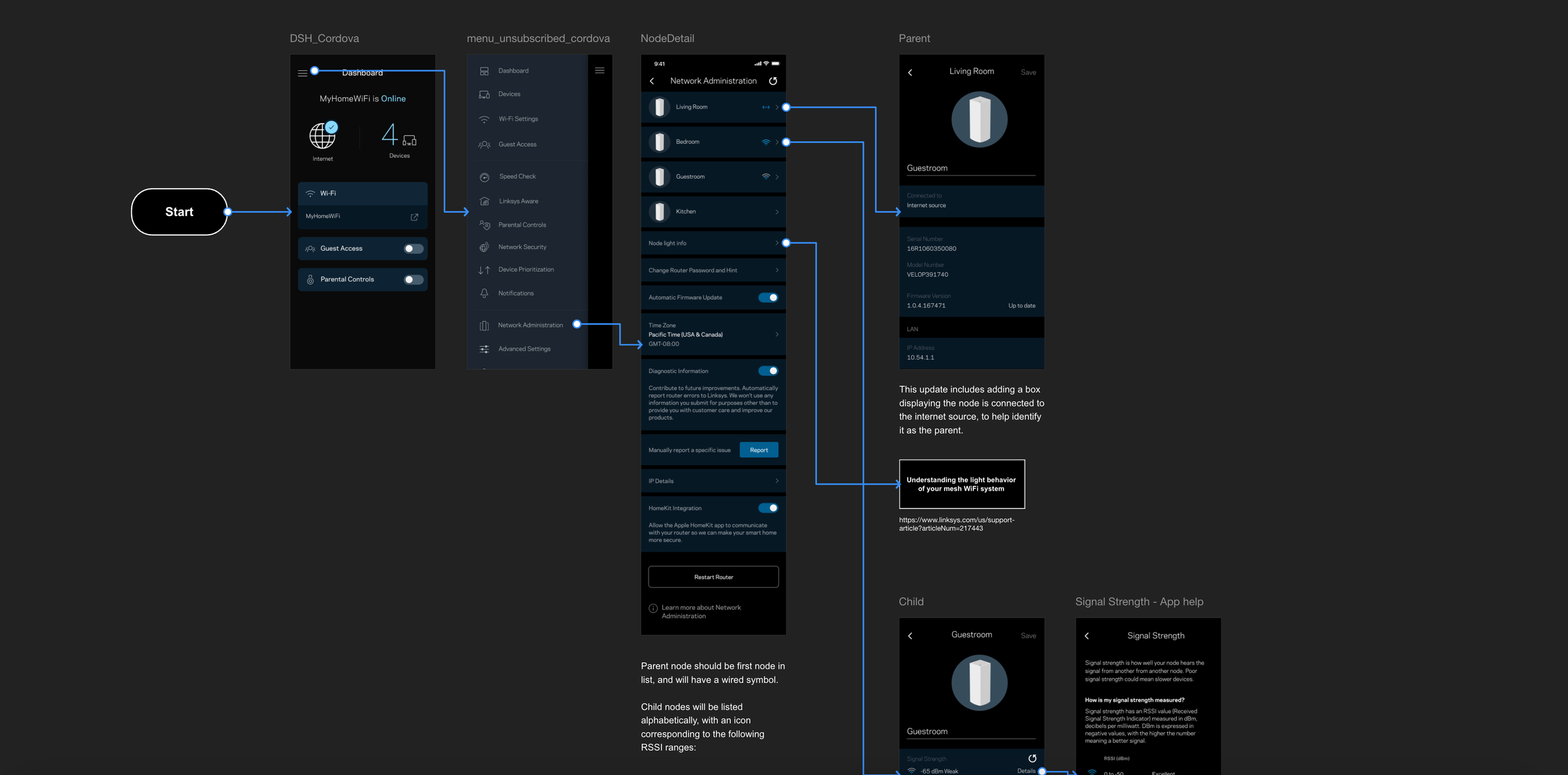
3. Reveal RSSI data
The easiest, most low effort item was revealing data we already had: the router’s signal strength reading (measured in a RSSI value).
Results
Following the call-reduction app release, our data analyst reviewed the Power BI data at 32 and 100 days.
The data shows a sustained reduction in overall calls to support, specifically:
General product support: 12% drop
Node to node connectivity: 14% drop
Setup: 15% drop